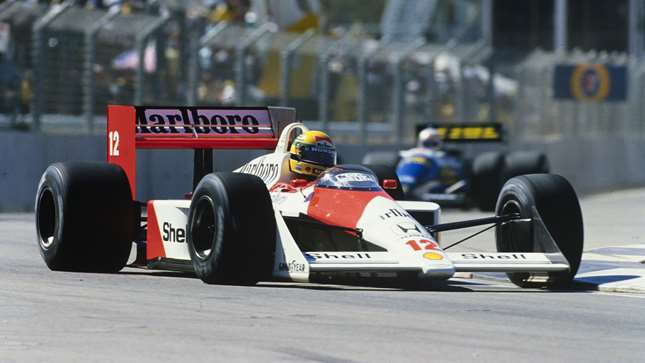Stu wrote: ↑01 Apr 2022, 18:57
vorticism wrote: ↑31 Mar 2022, 22:43
What was the reasoning for dropping turbocharging at the end of the 80s?
Teams/manufacturers were taking the piss with fuel (type/volume) & boost levels.
Attempts were made at equivalence with 3.0l NA ....
the FIA always attempted equivalence from 1938
eventually handicapping the supercharged (boosted) engine to death eg 1954 2500cc NA vs 750cc supercharged
but opened the door again by allowing boosted engines (so turbo) 70% of NA capacity in touring cars and endurance
and 50% for convenience in 1966 F1 3000cc NA 1500cc boosted (1961-5 was 1500cc NA 500cc boosted)
opened the door
F1 fuel capacity was then limited to .....
250 litres as part of 1973 crash-safety mandates
220 litres and refuelling ban in 1984
195 litres in 1985 - apparently for both NA and boosted
(presumably both at this point on the road to higher fuel density ie toluene etc)
then 1987 4 bar MAP limit
1988 2.5 bar MAP and 150 litres fuel limit (boosted only)
how could the FIA 'experts' be so useless ?
proudly limiting RON was laughable - even MON would have been better
eg for 1958 F1 switched to 'road fuel' aka 'pump fuel'
allowed Avgas (we're now always told 100/130)
but these numbers are minima - typically 100/130 tests at c.110/130
and somewhere in primotipo it even says they used Avgas 108/135
aromatics (toluene/benzene/xylenes) have always been the enabling ingredients in this (1938-invention) Avgas
detonation-resistance is poor at high flame temperatures but outstanding at low flame temperatures ie rich mixtures
the 100 or whatever is the RON - in effect a lean mixture test
the 130 or 135 is the supercharge performance number - in effect a rich mixture test
what did the FIA think those numbers were there for ?
on high-aromatic fuel the boosted engine makes much better use of rich mixture than does the NA engine







